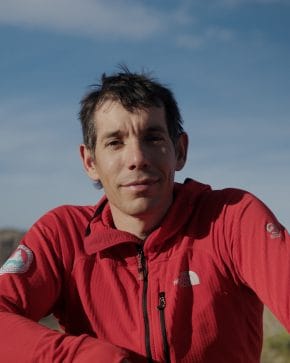Explainer
What is a carbon footprint?
Words: Cecily Layzell
Main image: Sarah Chai on Pexels

How big is your carbon footprint? We explain what it means, how to calculate it, and how to reduce it.
Whether you like it or not, you have a carbon footprint. So does everyone and everything. It’s one of the ways we can understand the impacts of our actions and choices on the Earth’s climate.
What’s a carbon footprint?
A carbon footprint is the total amount of heat-trapping pollution, mainly carbon dioxide (CO2) and methane, emitted into the Earth’s atmosphere as a result of the things we do.
This is the pollution that drives climate change, so a carbon footprint is a way to put a number on the impact of our actions on the climate. The average person in the UK has a carbon footprint of about 13 tons. That’s more than someone in China and less than someone in Australia.
The term is usually used to talk about an individual person, but we can also calculate the footprint of companies, products and whole countries. For example, an 8-oz steak (produced in the UK) has a carbon footprint of 5.8kg, according to Mike Berners-Lee’s book How Bad Are Bananas. The Qatar World Cup had a carbon footprint of 3.6 million tons according to FIFA… or 10 million tons according to independent observers, who said FIFA’s estimates were based on unrealistic assumptions.

Carbon neutral? Hardly. Fireworks at the 2022 FIFA World Cup Final between Argentina and France in Qatar. Photo: Richard Heathcote / Getty Images
Remember, you’re just one person
Carbon footprints are a handy concept to help us understand our impact on the world around us. But it’s worth knowing the history of the term. Although you might associate it with trying to do good for the planet, back in the early 2000s when the term ‘carbon footprint’ became popular, it was actually promoted by none other than oil giant BP, which encouraged customers to calculate their carbon footprint, as a way of drawing attention away from its own impact.
So when governments or businesses ask you to reduce your footprint, remember that you’re just one person, whereas they wield far more power. Ask them what they’re doing too!
What makes up your carbon footprint?
It’s different for every person, but the biggest elements of a person’s carbon footprint tend to fall into these four categories:
- Transportation: How much pollution is caused by the way you travel around? If you fly or drive a lot, this is likely to be a big chunk of your footprint.
- Home energy use: The electricity and gas used to heat your home and run appliances.
- Food: Your diet is probably a bigger part of your impact on the climate than you think. The more meat and dairy you eat, the bigger your overall footprint will be.
- Goods and services: Everything you buy, from clothes to electronics, has a carbon footprint that counts towards your total footprint.
What’s a climate shadow?
The concept of climate shadow is a newer idea that reminds us of the influence we all have, beyond the pollution caused directly by our activities. Who do we influence with our words and actions? Who did we vote for? Where is our pension invested? What businesses do we support? It’s a reminder that humans are social animals, and our power and influence is bigger than we sometimes think.
Calculating your carbon footprint
You can have a go at working out your carbon footprint using an online carbon footprint calculator, which adds up all your carbon emissions, usually over a period of one year. These calculators consider various consumption habits and lifestyle choices to estimate your impact on the environment. Calculating your footprint means taking into account food, the energy you use at home, transport and the products and services you buy.
There are several carbon footprint calculators out there for individuals, households and businesses. Some of them also give you the option to fund carbon offset projects directly through the tool. Carbon offsets are supposed to compensate for the carbon you emit, for example by planting trees or installing renewable energy sources – although critics say the whole idea of ‘offsetting’ emissions is a distraction from the importance of reducing them.
Created by the University of California, the CoolClimate Calculator is a good choice if you live in the United States, and it has a nice ‘Advanced’ section if you want to dig into the details. Carbon Footprint’s carbon calculator is a good all-rounder wherever you live. You’ll not only learn what your carbon footprint is. but also identify areas where you can make positive changes.

An urban bike path in Astana, Kazakhstan. Traveling more by foot and bike is one simple way to keep down your carbon footprint. Photo: Radis on Pexels
Ways to reduce your carbon footprint
- Choose plant-based meals more often, as the production of meat and dairy products contributes significantly to greenhouse gas emissions. You can also support local and organic food sources to reduce the footprint associated with food miles.
- Opt for greener modes of transport such as walking, cycling or using public transport whenever possible. If you need a car, consider carpooling or investing in an electric vehicle.
- Reduce your energy consumption at home – look at how your home is heated and insluated, and where your electricity comes from.
- Try not to buy things you don’t need. Every product we buy (and its packaging) has a footprint.
- Invest your money carefully. For instance, do you know what activities your pension is supporting?
Interested in more hopeful stories and inspiration on how to live a planet-friendly life? Sign up for our newsletter and get a 20% discount on our latest magazine too.
Imagine5 Volume 4 is here.

Cover star Madame Gandhi on the sounds of the Antarctic, free climber Alex Honnold reveals his biggest challenge yet, actor Rainn Wilson embraces his soulful side and much more more!
Starting at 7,- plus shipping
Get your copy now






